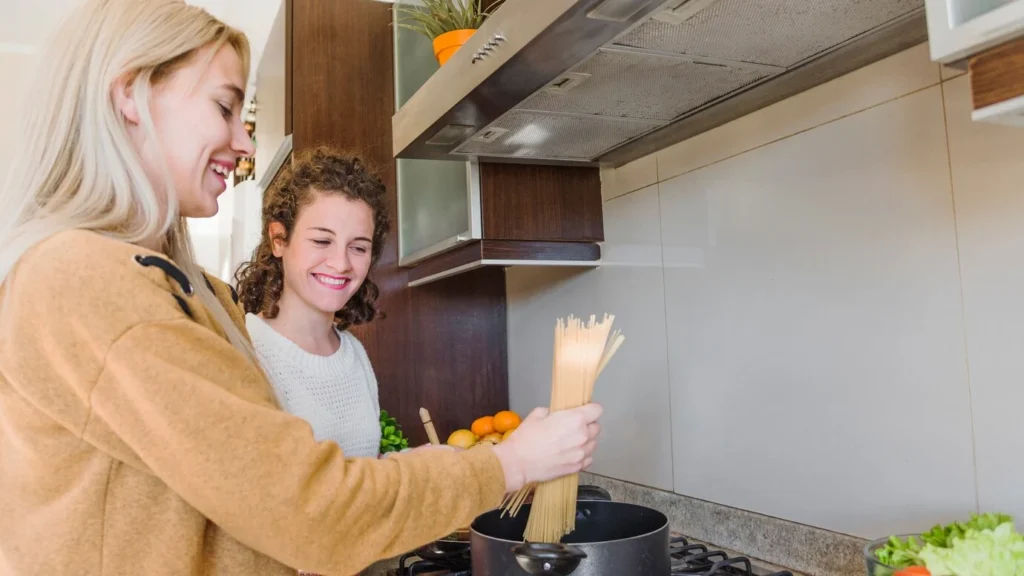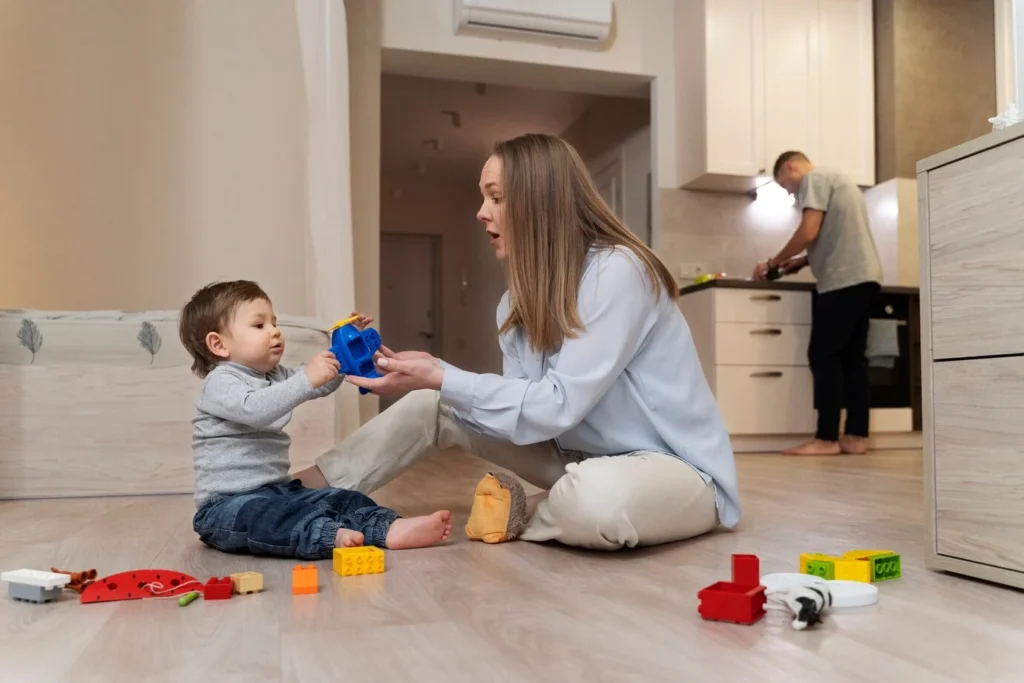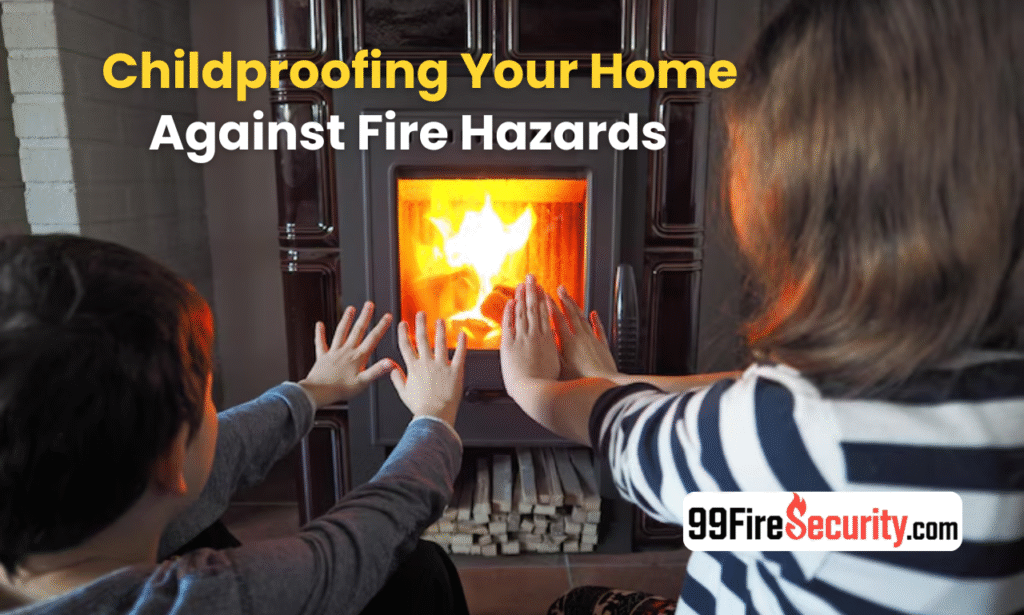Childproofing your home against fire hazards s always a risk of fire in the house. This risk appears whenever we save money at home. Safety of children from fire hazard comes first. Parents should check each room. Every safety device should be understood. Fire can start from anything. Use of a fire guard is mandatory. Each switch should be covered.
Fire safety is not just an adult’s duty. Even a Childproofing can learn to be safe. Fireproof system should be in every house. It is important to remain calm during an emergency. Today we will discuss fire safety in detail. Fire prevention is the responsibility of every parent. Understanding fire risk is important for everyone.
Electric Safety Plan
Electrical wires are the main cause of fire. Every socket should be protected. Switch covers are placed in each plug. If the wires are exposed, tape them. Short wires are always a risk. Install the extension board in a safe place. Overload can cause short circuits. Unplug each device after use. An electric fan can also cause a fire. There is no copper in the fan blades. Remove the mobile charger even when not in use. Table lamps should also be plugged into a safe plug. Be careful when using electric heaters. Manual repair of every electrical item.
Securing the kitchen
The risk of fire is highest in the kitchen. Do not wait near the stove. Cooking oil catches fire quickly. It is important to be alert while cooking. Children should not be alone in the kitchen. Childproofing the kitchen includes keeping potential hazards out of reach. Place the box of matches on the shelf. Keep the lighter in a closed drawer. Do not forget to switch off the stove after using it. After cooking, do a thorough inspection of the kitchen. Checking gas emissions should be a daily duty. Also unplug the oven and toaster. The kitchen floor should be slip resistant. The kitchen gate will remain. Cutting tools should be stored behind the back door.

Use of smoke alarms
Smoke alarms are a major part of fire safety. Every room should have an alarm. The alarm should be tested every month. Beep sound for battery replacement. The battery is replaced every six months. Old smoke alarms should be replaced. Do not place the alarm near a fan. It is supposed to be placed at the center of the roof. Alerts everyone when there is a fire. A smoke detector saves your life. The alarm light should be on. It acts as an automatic fire guard. The alarm can also be set from a fire station. Childproofing the home includes making sure smoke alarms are properly installed and maintained.
Heaters and fire items
The use of heaters is prohibited in winter. Heaters should never be close to curtains. There should be no paper or plastic near the heater. Children should not choose a heater. Childproofing measures should include keeping heating devices out of children’s reach. The surface should be smooth while burning the candle. The candle is in a stable holder.. The candle should not be lit. Install protective grills on fireplaces. Curtains and carpets should be fireproof. Turn off the heater so you don’t waste it. The door is locked by a fire source. Gas heaters are very dangerous. The floor heater is placed in a safe corner.
A fire extinguisher is essential
Fire extinguisher should be in the house. A fire extinguisher must be installed in every room. A fire extinguisher is the most important thing in the kitchen. Fire extinguishers need to be set up. Every adult should learn to use it. Water and powder extinguishers are used separately. Always check the extinguisher label. The expiry date should also be checked. Use according to fire class. An ABC extinguisher controls every fire. It is safe to mount it on the wall. You have closed the doors to the children.
Creating a fire escape plan
There should be an escape plan in case of fire. Every member should know the way out. Every door and window can be opened. A fire prevention plan should be a routine in the home. Fire drill every two months. Every member should remember the emergency number. Everyone should evacuate after the fire alarm. Basement and roof plans should also be prepared. Children should be kept in safe places. Don’t panic during a fire. The plan chart was posted on the wall.
Children should learn fire safety
Children should understand the danger of fire. Fire toys or games were not available. Guide them with cartoons and stories. Safety rules should be repeated every week. Matches and lighters are for adults only. Tell someone if you see smoke. There should be a door from the stove and heater. Near the emergency exit point. Childproofing also involves educating children about fire risks and safe behavior. Add them to the fire drill. You can learn safety from books and apps. Watch fire safety videos on TV and YouTube.
Living room and bedroom safety
Wires should be kept safe in the living room. Install the extension board close to the wall. Unplug the remote and charger when not in use. Curtains and sofas should be fire resistant. Do not use heaters in the bedroom. Candles are lit only in pots. Pillows and bed sheets should be fireproof. The night lamp is installed in a safe socket. Mattress foam catches fire quickly. Check the room fan and AC. Fire hazard appears at night. Build a fire exit near the door.

How to store flammable items?
Childproofing is important. Flammable items should be kept in closed containers. Spraying perfume or sanitizer can cause a fire. Paint thinners and cleaners are also a fire hazard. The storage area should have a fan. Place room freshener or polish on the shelf. Do not use them in the kitchen. Keep lighters and matches away from children. Plastic bags can catch fire. Do not keep petrol or diesel in the house. Label the flammable bottle.
Conclusion
Fire safety is important every day. Childproofing is the duty of every parent. Each device should be evaluated. Safety devices should be in every room. Staying calm during a fire is most important. Smoke alarms and extinguishers can save lives. Child training is very important. Childproofing plays a key role in protecting young children during emergencies. Every parent should create a safety system. Every family should have a fire risk plan. Fire protection keeps the family safe. Make your home fire safe today.
FAQs
Q1: Is a smoke alarm necessary?
Yes, a smoke alarm is a must for every home. This device gives a warning before a fire occurs. This gives you an opportunity to take early action. Smoke alarms should be installed in every room. Childproofing includes ensuring smoke alarms are in place and functioning to keep the entire family safe.
Q2: How much fire should I practice?
Every family should do a Martina fire drill every month. This is a routine practice that helps in an emergency. Both children and adults should play a role in the drill. The purpose of the drill is to follow an escape plan and stay alert. Childproofing your home also means ensuring everyone knows how to safely exit during an emergency.
Q3: How to teach fire safety to children?
Children need to understand fire safety in simple terms. You can train yourself through cartoons and stories. Childproofing is essential to ensure they stay safe around potential hazards. One should stay away from the fire of unbelievers. Do not touch the stove or heater. Lighters and matches are for adults only.
Q4: How to make kitchen fires safe?
Stoves and ovens in the kitchen cannot cause fire. All cheeses should be removed after cooking. Do not keep cooking oil or paper near the stove. Children should not go into the kitchen unsupervised. Childproofing includes keeping dangerous items like matches and lighters in closed drawers.
Q5: Where should flammable items be kept?
Every flammable item must be kept in a safe place. These items can also explode during a fire. Perfumes, thinners, sprays and polishes should be kept in a closed cabinet. Childproofing includes storing such hazardous items out of children’s reach. Keep the door away from heat sources or sunlight. Label it appropriately.
Q6: What should be done during a fire?
Do not panic if there is a fire. Stay calm and follow an escape plan. Children should be kept in a safe zone. Dial the emergency number. If possible extinguish small fires with fire extinguishers.
Question 7: At what age should fire training be started?
Fire safety training should begin before adolescence. Ground rules are laid down from an early age. If you can’t touch a match or see smoke, don’t touch it. Aista Aista understands drills and safety tips. Childproofing includes teaching children fire safety in a way they can understand. This is necessary to protect them.


